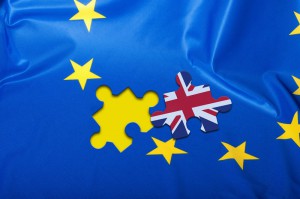Q3 Growth at 3.3%
 In much the same way as Brexit is driving Sterling and monetary policy is steering the Euro, it seems that the fate of the dollar is determined by the prospect of higher interest rates in the U.S.
In much the same way as Brexit is driving Sterling and monetary policy is steering the Euro, it seems that the fate of the dollar is determined by the prospect of higher interest rates in the U.S.
Yesterday’s release of Q3 GDP data which showed that the U.S. economy grew at 3.3% in the three months to September had barely any effect on the dollar. The dollar index, which tracks the value of the dollar versus six of its primary trading partners closed unchanged on the day at 93.28.
With the new month starting tomorrow, the monthly jamboree around the release of employment data will be delayed until December 8th. With the FOMC meeting the following week, interest will be centred around the incomes element of the data as any trace of wage inflation will be seized upon by traders looking for confirmation of a rate hike.
Thinning liquidity will magnify any move but with the market in well-defined ranges it will take a major development to cause a significant move in either direction. Data releases have been generally supportive of the dollar without being sufficiently out of line with expectation to provide fresh impetus.
Brexit reaching a decisive point
 There is a feeling pervading the market, not driven by any tangible development, that December is going to be a decisive point in the Brexit negotiations.
There is a feeling pervading the market, not driven by any tangible development, that December is going to be a decisive point in the Brexit negotiations.
The summit of EU Heads of Government on December 14/15 is going to rule upon the start of stage two of the talks where the future relationship between the U.K. and EU will be decided. This will mark the start of the “real” discussion, since what has taken place since the triggering of article fifty in March has been simply preparatory.
The pound is reacting positively despite the continued disappointments that have marred the discussions so far. It has reached 1.1361 versus the common currency, still shy of the post rate hike high of 1.1407 and 1.3480 against the dollar, its highest level since late September. The pounds seeming recovery from the dovish sentiments of the MPC has been a feature of its trading recently although that sentiment can be dashed by one word from Juncker, Tusk or Barnier.
The overnight spat between May and Trump over the President’s retweeting of right wing videos is unlikely to have any lasting effect on their relationship and therefore the exchange rate.
Error, group does not exist! Check your syntax! (ID: 4)
Eurozone data to provide ECB with food for thought
 Yesterday’s increase in inflation in Germany points towards a Eurozone-wide increase when data is released later today. Given the sensitivity of Germany to inflation renewed calls for some monetary policy action will start if the data shows any significant increase.
Yesterday’s increase in inflation in Germany points towards a Eurozone-wide increase when data is released later today. Given the sensitivity of Germany to inflation renewed calls for some monetary policy action will start if the data shows any significant increase.
Employment data is also released later with the ECB still trying to assess exactly what denotes full employment across the entire region. It is thought that unemployment below 9% of the entire population is close to full employment and today’s data should be around 8.9%. In the past such a release would be considered inflationary although today’s data should show price increases at 1.6% year on year, well below the ECB’s 2% target.
Given that the Euro has only been in use for less than twenty years and there have been new economies added at regular intervals, the ECB is constantly formulating policy to deal with the region as a whole, which is the goal of ECB President Mario Draghi. The diverse nature of the Eurozone countries coupled with their individual fiscal policies makes determining the correct level of stimulus or otherwise that needs to be applied a near-impossible task.
















